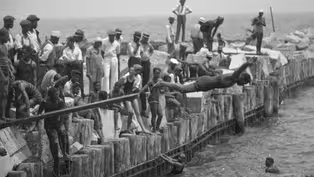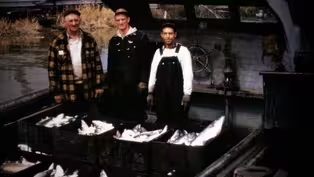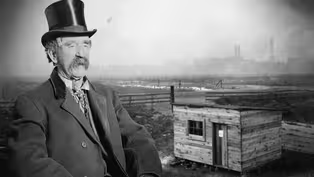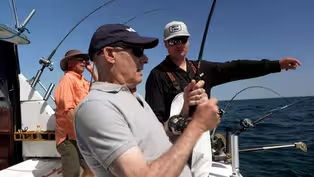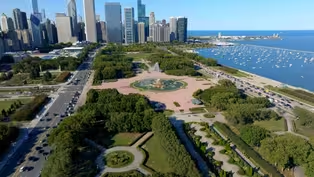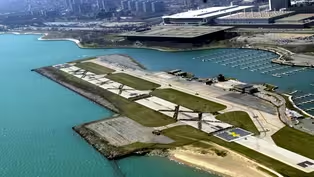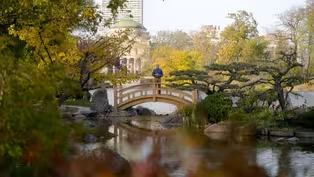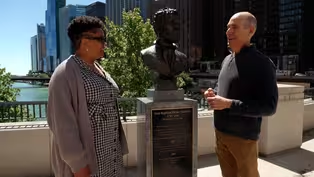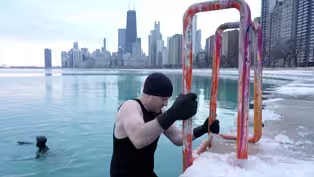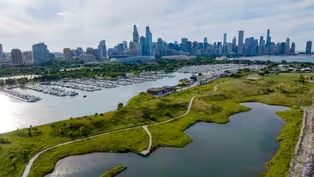
The Shipwreck at Morgan Shoal
Clip: Special | 4m 44sVideo has Closed Captions
A shipwreck sits just 600 feet off Chicago’s lakefront on an ancient reef.
Just 600 feet off Chicago’s shoreline sits the wreckage of the Silver Spray, a steamship that got stuck on an ancient reef called Morgan Shoal and broke up in 1914. There were no passengers on board, and the crew all survived. The boiler and propeller are all that remain today. Morgan Shoal offers clues into prehistoric Chicago, which was a tropical sea 425 million years ago.
Problems playing video? | Closed Captioning Feedback
Problems playing video? | Closed Captioning Feedback
Chicago Tours with Geoffrey Baer is a local public television program presented by WTTW

The Shipwreck at Morgan Shoal
Clip: Special | 4m 44sVideo has Closed Captions
Just 600 feet off Chicago’s shoreline sits the wreckage of the Silver Spray, a steamship that got stuck on an ancient reef called Morgan Shoal and broke up in 1914. There were no passengers on board, and the crew all survived. The boiler and propeller are all that remain today. Morgan Shoal offers clues into prehistoric Chicago, which was a tropical sea 425 million years ago.
Problems playing video? | Closed Captioning Feedback
How to Watch Chicago Tours with Geoffrey Baer
Chicago Tours with Geoffrey Baer is available to stream on pbs.org and the free PBS App, available on iPhone, Apple TV, Android TV, Android smartphones, Amazon Fire TV, Amazon Fire Tablet, Roku, Samsung Smart TV, and Vizio.
(bright music) (waves murmuring) (engine humming) South of 31st Street Beach, a dive boat takes us to one of the lakefronts most surprising secrets.
Going to a shipwreck.
A shipwreck that's just 600 feet from Lakeshore Drive in the Kenwood neighborhood.
And you don't have to be a scuba diver to see it.
It's just inches below the surface on an ancient rocky reef called Morgan Shoal.
(water splashes) (soft music) As you're swimming up to it, it just kind of appears out of the gloom.
- [Philip] Yeah, it is kinda like a sea monster coming out to get you a little bit.
- [Geoffrey] This is the boiler of the doomed steamship Silver Spray.
It's been here since July 15th, 1914.
On that fateful day, Silver Spray was headed to the University of Chicago to pick up business students and take them on a field trip to a Gary, Indiana steel mill.
- So the steamer set out from Chicago, headed down here, clear skies, perfect weather, and ran smack into Morgan Shoal.
Right out here actually.
- [Geoffrey] Fortunately for the students, they hadn't boarded yet.
It was just the crew run aground on Morgan Shoal.
At first, they were more interested in eating lunch than abandoning ship.
But after three days, the wind picked up and the crew jumped overboard as waves smashed the wooden hull against the rock.
- [Philip] Bits and pieces of the Silver Spray then washed up on shore.
Because it was so close, hundreds of people were watching this, and they started picking up pieces of this driftwood and starting fires.
Not just fires but bonfires.
- [Geoffrey] The Chicago Examiner wrote, "Like a Roman holiday, bonfires of the sturdy timbers were built and in their flaring light a feast of the remnants was made."
- Parties broke out, it started to get outta hand.
And finally the Chicago Police had to come through and clean the place out before it got completely outta control.
(both chuckling) - [Geoffrey] The crew swam ashore and all survived.
All that remains is the ship's boiler and propeller.
Totally blew my mind to see it.
And all the old-fashioned like rivets around it.
(gentle music) I was curious about the rock that sank the ship, because most of Lake Michigan's bottom is nothing more than sand and muddy sediment.
Turns out this rock has a story too.
It was once a coral reef.
- If we go back in time, 425 million years- - Oh, just a few years.
- Few years.
Chicago was actually south of the equator and it was in a shallow, tropical sea, underwater.
- We would've had a good tourist trade 400 million years ago.
- It would've been totally different- - It would've been just visit tropical Chicago.
- It would've been just like the Caribbean.
- [Geoffrey] But continental Drift crashed the beach party and moved tropical Chicago to the 42nd parallel.
Over millions of years, the reef died and transformed into a kind of rock akin to limestone called dolomite.
Today this massive dolomite shelf stretches all the way to Buffalo, New York where Niagara Falls spills over it.
Morgan Shoal is one of the rare spots in our area where the dolomite pops up above the lake floor or topsoil.
It's mostly buried hundreds of feet below ground where it serves an important modern day purpose.
It's quarried for gravel and concrete and it supports our skyline.
- [Philip] This bedrock extends throughout the region and some of the skyscrapers in downtown Chicago have some of their pilings driven down into this bedrock.
- If I put my hand right on the rocks down there- - That rock is 425 million years old.
Predates the dinosaurs by hundreds of millions of years.
Glaciers came and went.
It's Lake Michigan now.
I mean, it's seen so much history.
- [Geoffrey] And I could put my hand right on it.
Touch Morgan Shoal and you touch the foundation of Chicago.
31st Street Beach and the Red Summer of 1919
Video has Closed Captions
Clip: Special | 4m 45s | Racial violence in Chicago first exploded at a lakefront beach during the Red Summer. (4m 45s)
Calumet Fisheries and the Legacy of Commercial Fishing
Video has Closed Captions
Clip: Special | 3m 51s | Calumet Fisheries is a rare survivor of Chicago’s commercial fishing days. (3m 51s)
The Con Man Who Staked a Claim on Streeterville
Video has Closed Captions
Clip: Special | 2m 3s | Chicago’s Streeterville neighborhood was once a seedy vice district. (2m 3s)
Video has Closed Captions
Clip: Special | 5m 52s | Geoffrey Baer embarks on a fishing trip on Lake Michigan. (5m 52s)
Grant Park: Forever Open, Clear, and Free
Video has Closed Captions
Clip: Special | 6m 42s | A. Montgomery Ward launched a legal battle to preserve the lakefront for the people. (6m 42s)
How Meigs Field Became Northerly Island (Again)
Video has Closed Captions
Clip: Special | 4m 34s | A former lakefront airport has become a green space once envisioned by Daniel Burnham. (4m 34s)
Jackson Park and The White City
Video has Closed Captions
Clip: Special | 2m 1s | Jackson Park was the site of the World’s Columbian Exposition. (2m 1s)
Jean Baptiste Point DuSable's Lakefront Homestead
Video has Closed Captions
Clip: Special | 3m 20s | Jean Baptiste Point DuSable built a homestead at the convergence of the river and lake. (3m 20s)
Video has Closed Captions
Clip: Special | 3m 44s | A horseback riding club teaches equestrian skills to a new generation. (3m 44s)
Meet Chicago's Winter Swimmers
Video has Closed Captions
Clip: Special | 4m 49s | Meet the swimmers who swim in Lake Michigan year-round – even in winter weather. (4m 49s)
The Montrose Beach Piping Plovers
Video has Closed Captions
Clip: Special | 4m 35s | Montrose Beach became a nesting site for piping plovers in 2019. (4m 35s)
The NASCAR Chicago Street Race
Video has Closed Captions
Clip: Special | 2m 56s | Geoffrey Baer visits the NASCAR Chicago Street Race. (2m 56s)
The Surprising History of Promontory Point
Video has Closed Captions
Clip: Special | 1m 32s | Promontory Point is yet another example of Daniel Burnham’s Plan of Chicago. (1m 32s)
Touring Chicago's Lakefront Trailer
Video has Closed Captions
Preview: Special | 1m 1s | Preview Touring Chicago's Lakefront, combining history and shining light on contemporary challenges. (1m 1s)
Providing Support for PBS.org
Learn Moreabout PBS online sponsorshipSupport for PBS provided by:
Chicago Tours with Geoffrey Baer is a local public television program presented by WTTW
